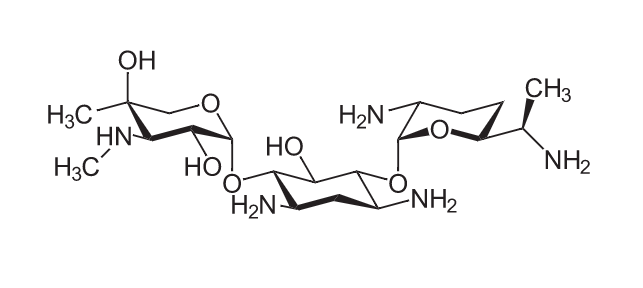Playlist
Show Playlist
Hide Playlist
Overview – Bacterial Protein Synthesis Inhibitors (Antibiotics)
-
Slides Antimicrobial Pharmacology Overview Bacterial Protein Synthesis Inhibitors.pdf.pdf
-
Download Lecture Overview
00:00 Let's move on to another category of antibacterial agents, the Bacterial Protein Synthesis Inhibitors. 00:08 So the bacterial protein synthesis inhibitors are narrow spectrum agents. 00:15 They act either on the 50S subunit such as linezolid or streptogramins or lincosamines. 00:22 Or the broad spectrum agents that are like the macrolides. 00:26 and chloramphenicol. 00:28 Other broad spectrum agents that act on the 30S subunit include the tetracyclines, the aminoglycosides. 00:36 Now let's just quickly do some definitions. 00:40 Because we need to do this before we go on. 00:42 There's something called as post-antibiotic effect. 00:45 So this is an anti-ineffective effect that lasts after the elimination of the antibiotic from the body. 00:50 That's often because we have some kind of, I wouldn't say permanent but long lasting effect in this case on the 50 or 30S subunits. 00:59 Bactericidal means that it kills bacteria. 01:03 Bacteriostatic means that it just stops the bacteria from replicating but doesn't kill them. 01:09 So the bacteria are still alive but the numbers aren't increasing. 01:13 So the other immune mediated, killing of the bacteria can occur unimpeded. 01:19 The 70S ribosomal mRNA subunit is composed of a 50S and a 30S. 01:28 Okay, I know 50 plus 30 is 80. 01:32 And how come 50 plus 30 equal 70. 01:34 Don't worry about it, the point is that the 50S and the 30S make up 70S unit. 01:40 Time dependent agents. 01:43 So these are drugs that have increased killing activity with time. 01:48 This is different from the concentration dependent killing where the drugs have increased killing activity with concentration. 01:55 So there you have some basic definitions and we're going to be using them as we go forward in this lecture. 02:03 Let's go on to the 70S ribosomal unit. 02:10 The 70S ribosomal unit is made up of 50S and the 30S units. 02:15 Now, this is a hamburger. 02:17 Think of it is as a hamburger bun. 02:19 So 50S is top of the bun and the 30S is the bottom of the bun. 02:22 So the 30S is smaller and flatter. 02:24 The 50S is bigger and puffier. 02:26 Now how this works is that you have this charged transfer tRNA on the end there. 02:33 Bringing in the 7th amino acid. 02:36 You can see the 7 in there, that's the amino acid. 02:38 So the charged transferRNA and sits on top of the mRNA, or messengerRNA. 02:44 And the messengerRNA is the base that determines what the coding is going to be for the protein. 02:51 Let's pretend for a moment that this particular protein is, or I don't know a protein involved in metabolism. 02:57 There's a specific code that's coded by mRNA. 03:00 And it tells the transferRNA which amino acids to bring in. 03:05 As it goes through the hamburger, it's as if you had a slice of cheese through the hamburger buns, you get different coding. 03:13 And you have a very specific sequence that makes up the protein. 03:18 So the protein is the sort of the chain of blue circles there. 03:22 Kind of like a string onion coming out of the hamburger. 03:25 So that protein is very specifically configured based on the characteristics of the messengerRNA. 03:32 Now the unchanged, sorry uncharged transferRNA is then discarded and eventually becomes charged and then it grabs another amino acid. 03:43 Now, the drugs we're going to talk about act at different points in this 70S ribosomal unit. 03:50 So for example, chloramphenicol blocks the transpeptidation which is the joining of the two amino acids. 03:57 The macrolides also block transpeptidation but in a slightly different area. 04:03 The tetracyclines binds to 30S subunit and prevent binding of incoming transferRNA. 04:10 So they actually stop, you know transferRNA number 7 from joining. 04:15 Linezolid has a unique site that inhibits initiation complex formation. 04:21 So initiation complex is the very first reaction that brings the 30S and the 50S together. 04:27 And allows everything to start working. 04:29 On the other end of the production line there, the streptogramins block exit ports for polypeptides. 04:36 So new ones can't come in and overall translation is inhibited.
About the Lecture
The lecture Overview – Bacterial Protein Synthesis Inhibitors (Antibiotics) by Pravin Shukle, MD is from the course Antimicrobial Pharmacology.
Included Quiz Questions
What statement about narrow-spectrum bacterial protein synthesis inhibitors is CORRECT?
- They act on the ribosomes.
- They are always bactericidal.
- They include antibiotics such as tetracyclines and aminoglycosides.
- They involve a narrow therapeutic index.
- They are effective against a wide range of disease-causing bacteria.
Which class of bacterial protein synthesis inhibitors works by preventing the binding of incoming tRNA?
- Tetracyclines
- Chloramphenicol
- Linezolid
- Streptogramins
- Macrolides
What best defines the term bacteriostatic?
- An agent that inhibits bacteria from replicating without necessarily killing them.
- An agent that kills bacteria upon exposure.
- An agent with increased killing activity with increased concentration.
- An agent whose activity is enhanced with increased duration of exposure.
- An agent whose effect lasts after the elimination of antibiotics from the body.
Customer reviews
5,0 of 5 stars
| 5 Stars |
|
2 |
| 4 Stars |
|
0 |
| 3 Stars |
|
0 |
| 2 Stars |
|
0 |
| 1 Star |
|
0 |
Best class in protein synthesis inhibitors I have ever watched. Thank you!
Very nice lectures! Focuses on the need-to-know things that have clinical relevance.







